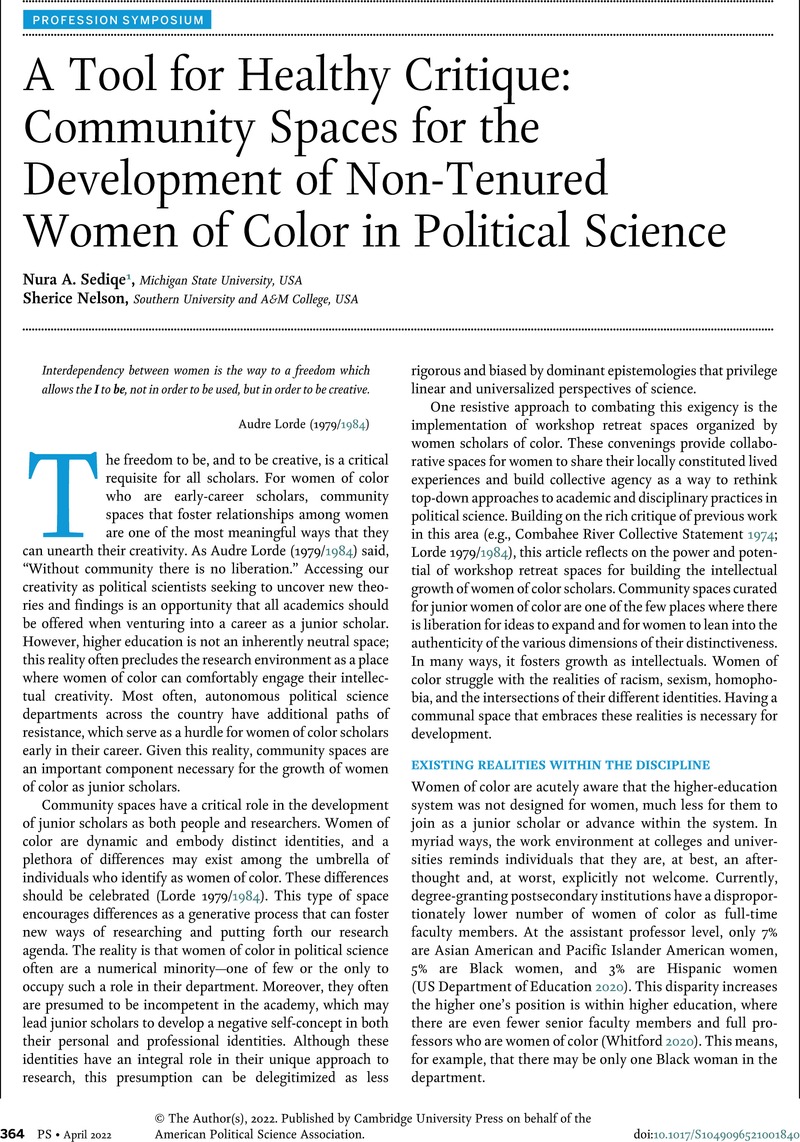Crossref Citations
This article has been cited by the following publications. This list is generated based on data provided by Crossref.
Jackson, Jenn M.
and
Juárez Pérez, Melina
2022.
Reclaiming Our Time and Labor: Contesting and Reframing Productivity Narratives in Political Science.
PS: Political Science & Politics,
Vol. 55,
Issue. 2,
p.
380.



